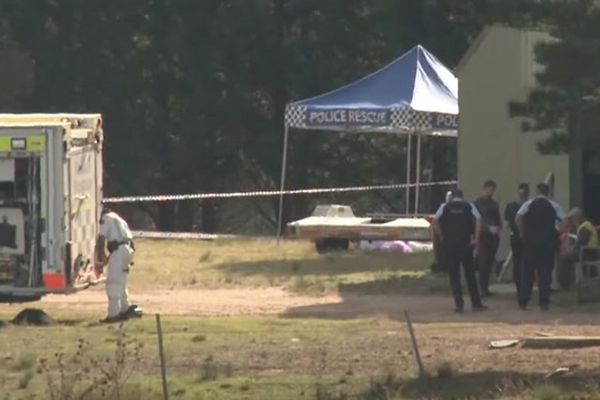
- The Canadian Automobile Association drove 14 EVs until they ran out of power.
- The ambient temperature was between 19.4 and 6.8 degrees Fahrenheit.
- The EVs lost between 14% and 39% of range.
Over a dozen electric cars were put to the test in the harsh Canadian winter to see how their advertised driving range fared in freezing temperatures. Spoiler alert: All cars performed worse than what their official range figures stated. But some were better than others.
The test was put together by the Canadian Automobile Association (CAA). The association’s reps drove 14 new EVs in temperatures ranging from 19.4 to 6.8 degrees Fahrenheit (-7 to -15 degrees Celsius) until they couldn’t move under their own power. Then, they were plugged into a 350-kilowatt fast charger to see how much time it would take to replenish the batteries.
Compared to the estimated average range figures published by Natural Resources Canada (NRCan), the 14 EVs lost between 14% and 39% of range in the freezing cold. Among the tested cars were seven of the ten best-sellers in Canada.
Two models—the Chevrolet Silverado EV and Polestar 2—came out on top with a 14% drop in real-world range. The Silverado EV, with a NRCan-estimated range of 450 miles (724 kilometers) and a huge battery pack, drove 283 miles (456 km) before needing a top-up. No, that's not even close to 14% but before you jump into the comments, the CAA mentioned the Silverado EV started the test at a 74% state of charge. The result was calculated to take this into account.


Meanwhile, the Polestar 2, with a NRCan range figure of 276 miles (384 km), died after driving nearly 255 miles (410 km). The popular Tesla Model 3 had a 30% difference between the official range figure and its real-world performance, with a NRCan estimate of 363 miles (584 km) and a real-world result of nearly 255 miles (410 km).
CAA Winter Range Test Results
| Model | Rank: Longest Range | Total distance driven on a single charge | Official NRCan range | Difference |
| Chevrolet Silverado EV | 1 | 283.3 miles (456 km) | 449.8 miles (724 km) | -14%* |
| Tesla Model 3 | 2 | 254.7 miles (410 km) | 362.8 miles (584 km) | -30% |
| Polestar 2 | 3 | 238.6 miles (384 km) | 275.8 miles (444 km) | -14% |
| Kia EV9 | 4 | 216.8 miles (349 km) | 270.2 miles (435 km) | -20% |
| Volkswagen ID.4 | 5 | 210 miles (338 km) | 290.8 miles (468 km) | -28% |
| Chevrolet Equinox EV | 6 | 209.4 miles (337 km) | 318.7 miles (513 km) | -34% |
| Ford Mustang Mach-E | 7 | 207.5 miles (334 km) | 300.1 miles (483 km) | -31% |
| Honda Prologue | 8 | 207.5 miles (334 km) | 272.7 miles (439 km) | -24% |
| Ford F-150 Lightning | 9 | 183.9 miles (296 km) | 320 miles (515 km) | -35%* |
| Kia Niro EV | 10 | 177 miles (285 km) | 252.8 miles (407 km) | -30% |
| Hyundai Ioniq 5 | 11 | 162.8 miles (262 km) | 254.7 miles (410 km) | -36% |
| Toyota BZ4X | 12 | 158.4 miles (255 km) | 252.2 miles (406 km) | -37% |
| Volvo XC40 Recharge | 13 | 154.1 miles (248 km) | 254.1 miles (409 km) | -39% |
The Kia EV6 did not participate in the range test "due to a complication." The calculation was adjusted to reflect that the Chevrolet Silverado EV started at 73% state of charge and the Ford F-150 Lightning started at 89% state of charge.
These figures are similar to what Recurrent found in its latest study. After analyzing data from over 18,000 EVs, the startup concluded that modern EVs lose between 11% and 37% of their driving range in the winter compared to ideal conditions.
After the range test, the 14 EVs were hooked up to a 350 kW charger—except the Tesla Model 3—to see how much time they needed to replenish their batteries. That said, it’s unclear if the batteries were preconditioned before plugging in.
CAA Winter Range Test - Charging Results
| Model | Rank: Charged the fastest in 15 minutes | Displayed miles added in 15 minutes | Time to charge from 10% to 80% | Average charging speed |
| Tesla Model 3 | 1 | 127.3 miles (205 km) | 37 minutes | 96 kW |
| Chevrolet Silverado EV | 2 | 123.6 miles (199 km) | 42 minutes | 233 kW |
| Chevrolet Equinox EV | 3 | 81.3 miles (131 km) | 42 minutes | 100 kW |
| Polestar 2 | 4 | 74.5 miles (120 km) | 40 minutes | 94 kW |
| Volkswagen ID.4 | 5 | 69.5 miles (112 km) | 34 minutes | 104 kW |
| Ford F-150 Lightning | 6 | 67.7 miles (109 km) | 45 minutes | 128 kW |
| Kia EV9 | 7 | 65.2 miles (105 km) | 33 minutes | 139 kW |
| Volvo XC40 Recharge | 8 | 55.9 miles (90 km) | 40 minutes | 87 kW |
| Ford Mustang Mach-E | 9 | 44.1 miles (71 km) | 46 minutes | 85 kW |
| Hyundai Ioniq 5 | 10 | 39.7 miles (64 km) | 45 minutes | 80 kW |
| Kia EV6 | 11 | 36 miles (58 km) | 43 minutes | 85 kW |
| Kia Niro EV | 12 | 21.7 miles (35 km) | 77 minutes | 36 kW |
| Toyota BZ4X | 13 | 11.8 miles (19 km) | 92 minutes | 33 kW |
The Honda Prologue was not included in the charge test as it encountered an error and data was unavailable, according to the CAA. All vehicles were charged using 350 kW chargers, except the Tesla Model 3 which was charged at 150 kW due to compatibility requirements with the non-Tesla adapter.
Despite Tesla's apparent disadvantage, it charged the quickest by gaining 127 miles (205 km) in 15 minutes. To get from 10% to 80% state of charge, the Model 3 needed 37 minutes and the average charging speed for the entire session was 96 kW.
The Chevrolet Silverado EV was in second place in the charging test, adding 123 miles (199 km) of range in 15 minutes and going from 10% to 80% SoC in 32 minutes. Its average charging speed was 233 kW. Third place went to the Chevrolet Equinox EV, which added 81 miles of range (131 km) in 15 minutes and had an average charging speed of 100 kW.
Losing driving range in the cold is inevitable for electric vehicles. That’s because the battery’s chemistry is physically affected by the cold, making it more difficult for energy to flow. Charging speeds are also affected by the cold, but only if the battery has not been preconditioned before a charging session.
Preconditioning uses energy from the battery to heat it, ideally reaching an optimal temperature when it’s time to plug in. The trade-off is that you lose energy in the process, but the charging stop should be quicker.







